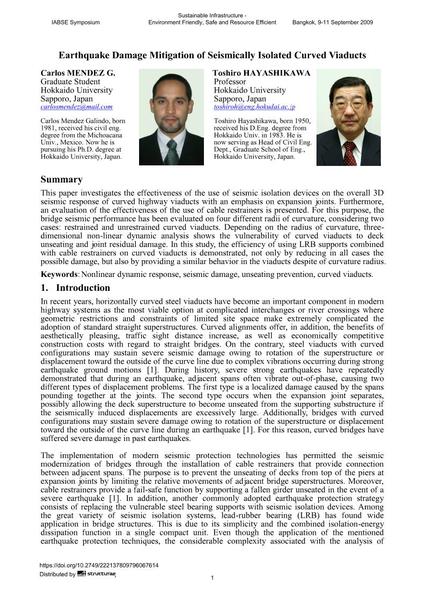Earthquake Damage Mitigation of Seismically Isolated Curved Viaducts

|
|
|||||||||||
Détails bibliographiques
| Auteur(s): |
Carlos Mendez
Toshiro Hayashikawa |
||||
|---|---|---|---|---|---|
| Médium: | papier de conférence | ||||
| Langue(s): | anglais | ||||
| Conférence: | IABSE Symposium: Sustainable Infrastructure - Environment Friendly, Safe and Resource Efficient, Bangkok, Thailand, 9-11 September 2009 | ||||
| Publié dans: | IABSE Symposium Bangkok 2009 | ||||
|
|||||
| Page(s): | 1-10 | ||||
| Nombre total de pages (du PDF): | 8 | ||||
| Année: | 2009 | ||||
| DOI: | 10.2749/222137809796067614 | ||||
| Abstrait: |
This paper investigates the effectiveness of the use of seismic isolation devices on the overall 3D seismic response of curved highway viaducts with an emphasis on expansion joints. Furthermore, an evaluation of the effectiveness of the use of cable restrainers is presented. For this purpose, the bridge seismic performance has been evaluated on four different radii of curvature, considering two cases: restrained and unrestrained curved viaducts. Depending on the radius of curvature, three- dimensional non-linear dynamic analysis shows the vulnerability of curved viaducts to deck unseating and joint residual damage. In this study, the efficiency of using LRB supports combined with cable restrainers on curved viaducts is demonstrated, not only by reducing in all cases the possible damage, but also by providing a similar behavior in the viaducts despite of curvature radius. |
||||
